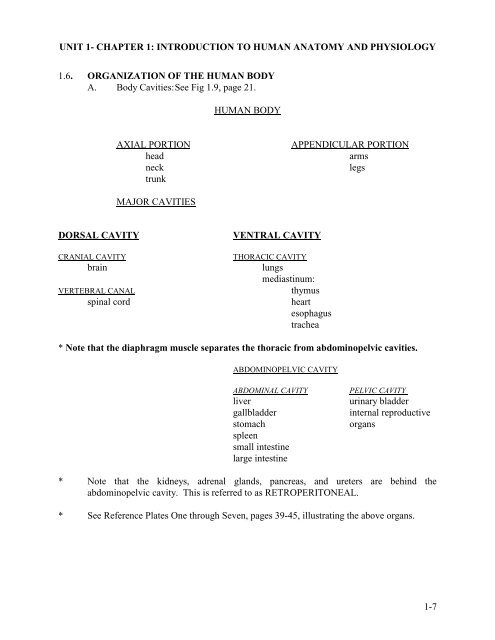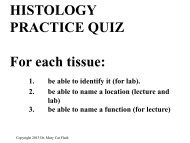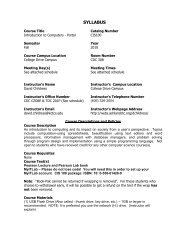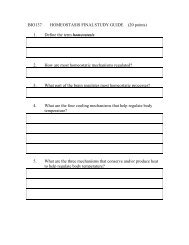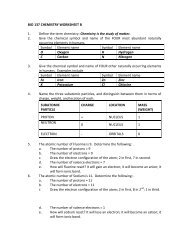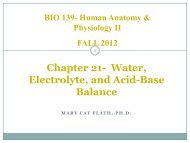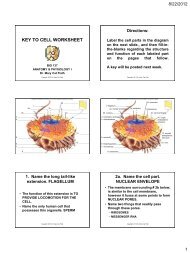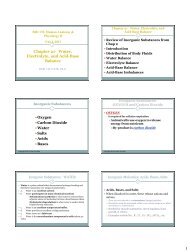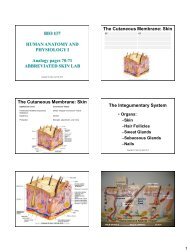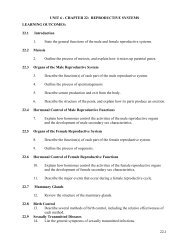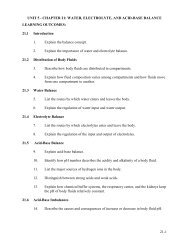CHAPTER 1: INTRODUCTION TO HUMAN ANATOMY ...
CHAPTER 1: INTRODUCTION TO HUMAN ANATOMY ...
CHAPTER 1: INTRODUCTION TO HUMAN ANATOMY ...
Create successful ePaper yourself
Turn your PDF publications into a flip-book with our unique Google optimized e-Paper software.
UNIT 1- <strong>CHAPTER</strong> 1: <strong>INTRODUCTION</strong> <strong>TO</strong> <strong>HUMAN</strong> ANA<strong>TO</strong>MY AND PHYSIOLOGY1.6. ORGANIZATION OF THE <strong>HUMAN</strong> BODYA. Body Cavities: See Fig 1.9, page 21.<strong>HUMAN</strong> BODYAXIAL PORTIONheadnecktrunkAPPENDICULAR PORTIONarmslegsMAJOR CAVITIESDORSAL CAVITYCRANIAL CAVITYbrainVERTEBRAL CANALspinal cordVENTRAL CAVITYTHORACIC CAVITYlungsmediastinum:thymusheartesophagustrachea* Note that the diaphragm muscle separates the thoracic from abdominopelvic cavities.ABDOMINOPELVIC CAVITYABDOMINAL CAVITYlivergallbladderstomachspleensmall intestinelarge intestinePELVIC CAVITYurinary bladderinternal reproductiveorgans* Note that the kidneys, adrenal glands, pancreas, and ureters are behind theabdominopelvic cavity. This is referred to as RETROPERI<strong>TO</strong>NEAL.* See Reference Plates One through Seven, pages 39-45, illustrating the above organs.1-7


